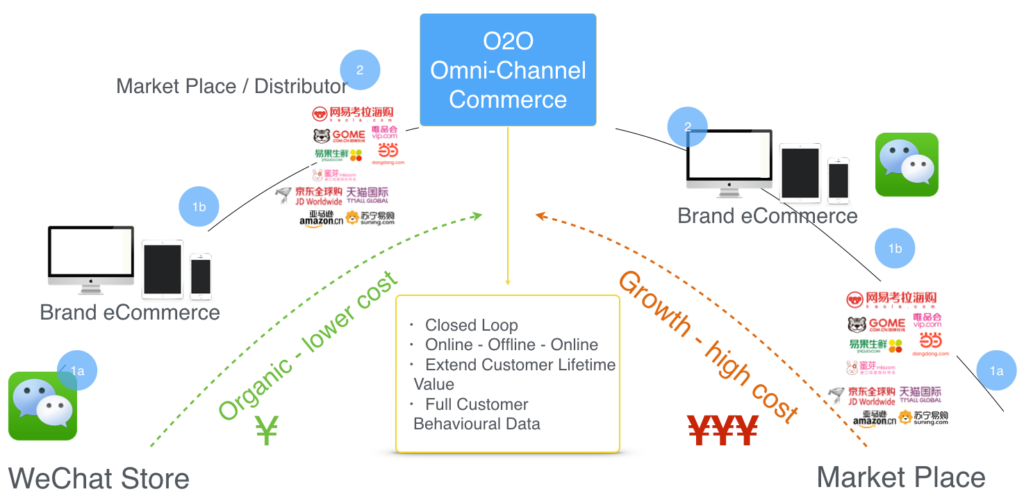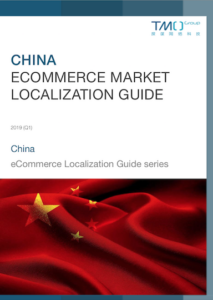This article is an update to last year's "2020 China eCommerce Insights". Here we hope to provide you with an up-to-date overview of China's eCommerce landscape to help you establish your business's online presence in China.
A Broad View of China eCommerce
This year, the total number of internet users in the world reached around 4.5 billion, or 59% of world’s population. Currently, estimates peg the global eCommerce retail market at about 14% of the total global retail market - in China, this is 35%. Last year the pace of growth of regular retail fell even faster than the recent downward trend, but though it also fell, global eCommerce managed to maintain a growth rate of over 16%. In China, B2C eCommerce spend grew faster than this, some 19%.
The United States and China dominate the global rankings thanks in large to Western eCommerce giants Amazon and Ebay as well as Chinese eCommerce giant Alibaba. In recent years it has become impossible to eCommerce opportunities without mentioning the rapid growth of China’s eCommerce. Experts have estimated the volume of eCommerce transactions to have been around 4.2 trillion USD in 2020.
Domestic B2C eCommerce
The local B2C eCommerce market is dominated by Chinese behemoths Tmall, part of China’s iconic Alibaba Group founded by entrepreneur Jack Ma, and its closest competitor Jingdong’s JD.com. Together they account for over 80% of the total China eCommerce market share. Furthermore, only a handful of other parties account for the remainder of the China eCommerce market share, whom typically are more specialized in particular product categories. This year, global eCommerce giant Amazon announced it was ending its domestic Chinese operations, following years of shrinking market share.
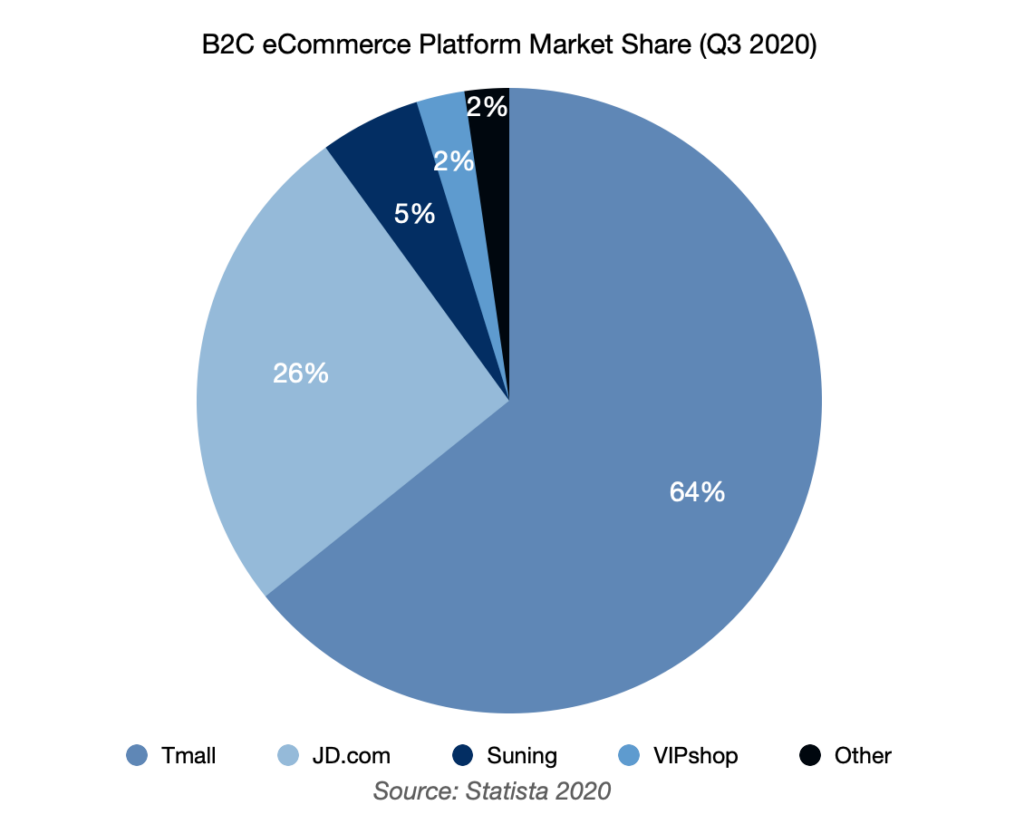
Traditionally, only large multinationals and smaller companies with business entities in China were able to offer their products through regular B2C eCommerce due to the nature of general trade to which it is applicable. In essence, via this method you must import products from abroad through regular trade, which requires a legal entity in China. Similarly, opening a store on a regular domestic B2C eCommerce platform requires a company with a Chinese entity.
Crossing Borders
On the other hand, cross-border eCommerce (CBEC) offers a comparatively accessible entry strategy with two primary advantages. First of all, CBEC is subject to fewer import taxes. Moreover, particular products are subject to fewer product compliance checks which will result in an easier value chain.
Positive List
Specifically, since April, 2016, China has maintained a "Positive List" for cross-border eCommerce. Following recent updates, the list contains a total of 1,321 product categories. Merchants can import these products into one of Bonded Warehousing: A Solution for Cross-border eCommerce in ChinaSelling in China through Bonded Warehousing is a cost-effective approach to CBEC in 2024. Here's everything you need to know about this model.22 approved CBEC bonded warehouse zones across China. Alternatively, they can ship these products from an overseas distribution center linked to Chinese customs. Neither method requires an import license or an import certificate.
If your product falls under the positive list you will enjoy a preferential tax rate of 9.1%. Products on the Positive Lists will generally be exempt from compliance China's product standards and import requirements, originally until only the end of 2018 but now indefinitely. If you are curious whether your product is on the Positive List, then please visit TMO's "Positive List Helper".
Continued Growth
In recent years, ever-increasing standards of living as well as greater exposure to foreign products have contributed to upsurge in CBEC transactions as evidenced by the graph below. Also among CBEC transactions we observe an annual double digit growth rate, in this case ranging between 17% and 19%.
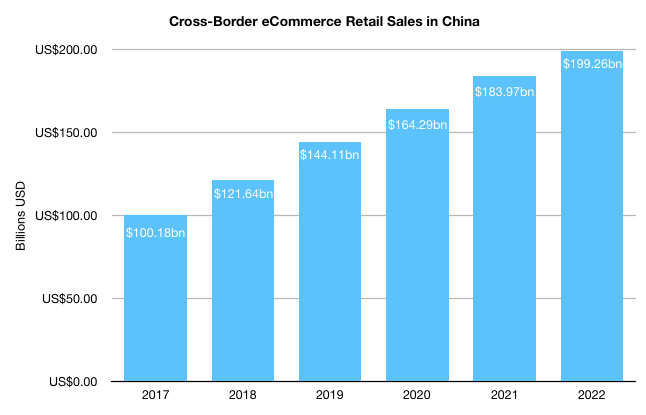
However, CBEC brings along its own challenges as the competitive environment differs significantly from regular eCommerce. In particular, the emergence of online shopping and the huge number of foreign merchants created a fragmented market (see the chart below) with numerous online sales channels.
Popular Platforms
New players such as Kaola and VIP.com are challenging longtime market dominators Tmall Global and JD Worldwide, while other new players like YangMaTou and XiaoHongShu are gaining market share quickly. The majority of cross-border transactions are performed by firms from other Asian countries including Japan and Korea, followed closely by the United States. Cosmetics in particular is a popular category, while childcare, nutrition, and healthcare products are increasingly becoming of interest to the Chinese consumer.
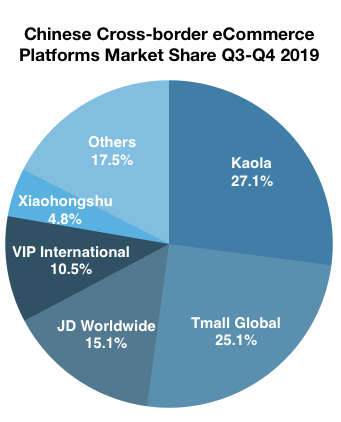
Sales Channels & Entry Strategies
Currently there are three channels through which foreign brands may consider to sell their products via CBEC, namely: through a stand-alone web shop, marketplaces, and WeChat stores. You can further divide these marketplaces into shop-fronts on online malls, hypermarkets, vertical specialty marketplaces, and flash sale websites. All of these channels allow you to sell your products in China without needing to obtain a Chinese business license. However, the success of your company is dependent on multiple different factors.
In order to determine how foreign business can use the differing sales channels to their advantage, we can broadly define two business development strategies.
- Fast Growth Strategy (high costs, higher growth).
- Organic Growth Strategy (lower costs, slower growth).
Eventually the aim is to develop an omni-channel sales strategy whereby one may sell their products both off- and online. Omni-channel eCommerce software solutions allow for the creation of a connection between existing information systems and a unified eCommerce platform.
Key Trends in Chinese eCommerce
eCommerce Livestreaming
This is already a large sales channel and one that has grown fast in recent years. In 2020, eCommerce live-streaming made over 950 billion RMB in China. This was after live-streaming penetration among Tmall stores had broken the 50% mark in 2019. Meanwhile, dedicated streaming and video platforms like Douyin (TikTok in the West) have found success in integrating eCommerce functionality. eCommerce live-streaming is especially strong in the Cosmetics market. This is likely due to its natural advantages for live product previews. However, other product types are likely to find increased success in 2021 as well.

Non-Traditional eCommerce Stores
This not only covers the above live-streaming stores but more besides. Sales on WeChat and embedded Mini-Programs there are on the rise. And group-buy platforms are going from strength to strength, especially in lower tier cities. In 2020, the community/group-buying industry increased by 12% over 2019 to reach a value of 72 billion RMB.
Forecasts have predicted that 2021 will be another strong year, and will see the industry grow to 100 billion RMB by 2022. This is set to be led by major platforms like Pinduoduo. Pinduoduo's gross merchandise volume grew from 840 billion RMB in 2019 to 1,457 billion RMB in 2020.
Increased Acceptance of Second-Hand Goods
The online market for pre-owned goods (or "ReCommerce") reached 1 billion RMB in 2020. Meanwhile, recent reports indicate that the second-hand market is set to overtake 'fast fashion' by 2028. It seems that the cultural hangups and distaste for preowned goods have given way to a keen interest in bargain-hunting among Chinese consumers.
KOLs and KOCs
KOLs will continue to be a big deal in 2021. Last year, studies found that more than 60% of buying decisions by Gen Z shoppers were influenced by KOLs. But now we're also seeing expanded interest in KOCs - Key Opinion Consumers. Unlike KOLs, these are not full-time social media influencers. They're just regular customers who frequently review and give advice on products they personally bought and use. Such advice has become a trusted source for smaller groups of their peers. This is likely because KOLs taking paid endorsements has eroded some of the previous trust in their advice. KOCs, meanwhile, are seen as still being authentic.
Your Next Step
Would you like to know what strategy will suit you best? Or has this article spiked your interest in China's eCommerce environment? Then reach out and get in touch regarding our eCommerce consulting services, so that we can work out a solution that works for you. Alternatively, check out our China eCommerce Market GuideThis in-depth China eCommerce Guide can help your company rise to the challenges of the Chinese market and sell via cross-border. Updated for 2020!China eCommerce Market Guide, updated for mid-2020. In this guide, we go over some more specifics about demographics, legal requirements, and marketing realities of taking part in Chinese eCommerce in 2020.


